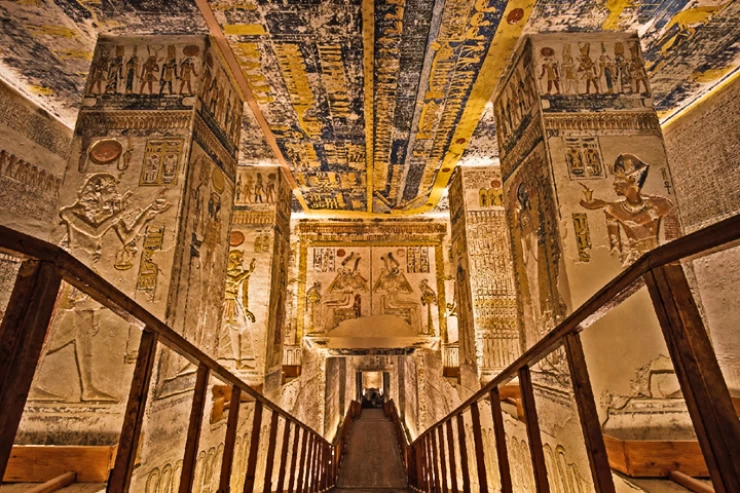
Al-Muzawaka tombs in Dakhla Oasis
Al-Muzawaka tombs in Dakhla Oasis
Al-Muzawaka tombs are one of the most important and beautiful archaeological and historical areas in the New Valley, located approximately 5 km from the village of Al-Qasr in Dakhla, which is a Roman tomb or cemetery dating back to the rule of the kings of the pharaohs and queens of Pharaonic Egypt in the era of the Roman Kingdom in the second century AD, and the ancient Egyptian artist was creative in using all the colors of fixed oxides, and egg albumen was also used.
These tombs are characterized by a number of decorative panels, colorful paintings and vivid religious inscriptions that originally combine both the ancient Egyptian gods of the Pharaonic religion of the ancient Egyptians and the Roman gods.
The history of those tombs in Al-Muzawaka dates back to the Roman era, and it is one of the most important and famous shrines in the Dakhla Oasis, where that strange name for those tombs is due to their Pharaonic drawings and then their decorative and beautiful colors that were combining a number of arts and a number of ancient Pharaonic beliefs as in the myths of the pharaohs and Roman beliefs and all their colors used and then their drawings on them that were previously painted on their walls are a set of very bright colors in a wonderful and then very eye-catching way.
Its importance is due to the beauty and splendor of all those wonderful drawings and those bright colors that were combining both the arts with both Pharaonic and Roman beliefs at the same time, and was discovered in 1973 by the great Egyptologist and Dr. Ahmed Fakhry.
Two archeological graves of two persons have been uncovered, one of which belongs to Badi al-Wazir and the other one to Badi Bastet. What all Egyptologists and archaeologists emphasize is that the Al-Muzawaka tombs are Pharaonic and Roman tombs that have a very great archaeological value that is very different from all other ancient archaeological areas to discover the extent of the development of architecture in ancient Egypt and the art of sculpture in ancient Egypt.
The first tomb is known as “Paddy Osir” and he was the priest who had built his tomb in that place, and his name meant the gift offered to the god Osiris, and that archaeological tomb included two ancient chambers intertwined with each other, and at the time it was already painted with an important and large layer of stucco, and it was designed very impressively, and that was about 2000 years ago.
It was painted with an important and large layer of stucco, and it was designed very impressively about 2000 years ago, but that second archaeological tomb was for another priest in that era who wanted to get very close to the god “Bast”, and that was the cat that was worshiped by the ancient Egyptians.

















